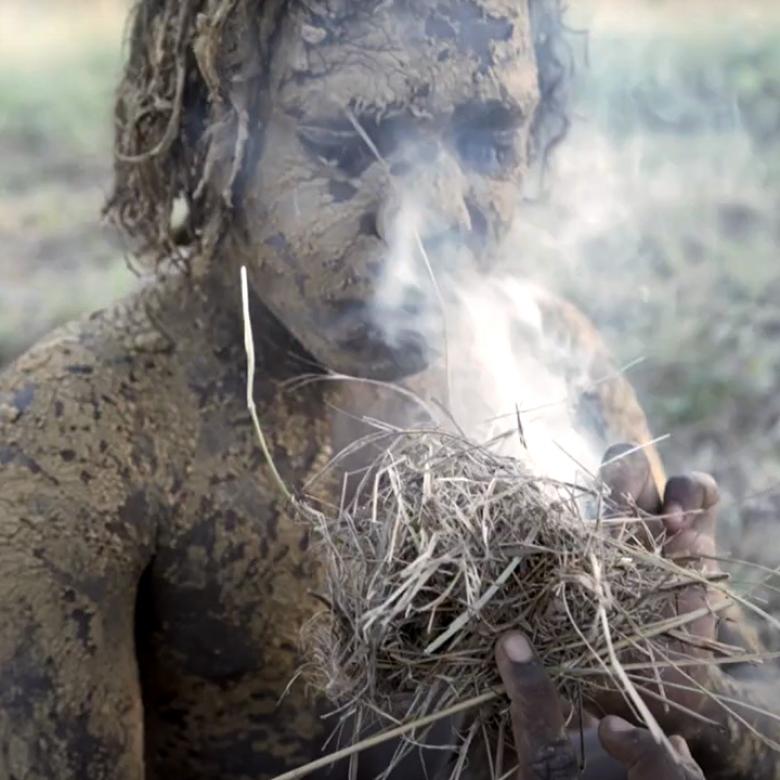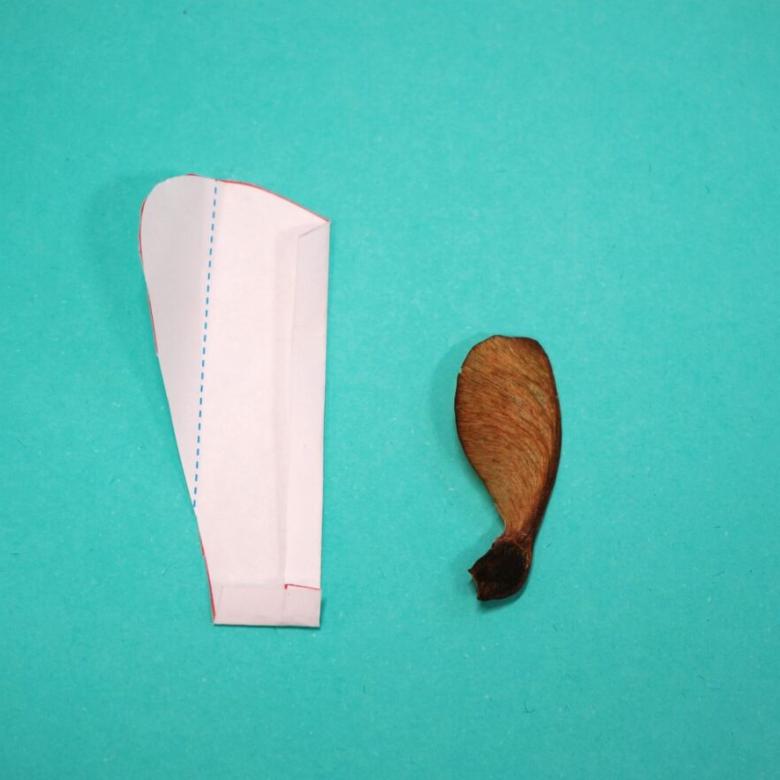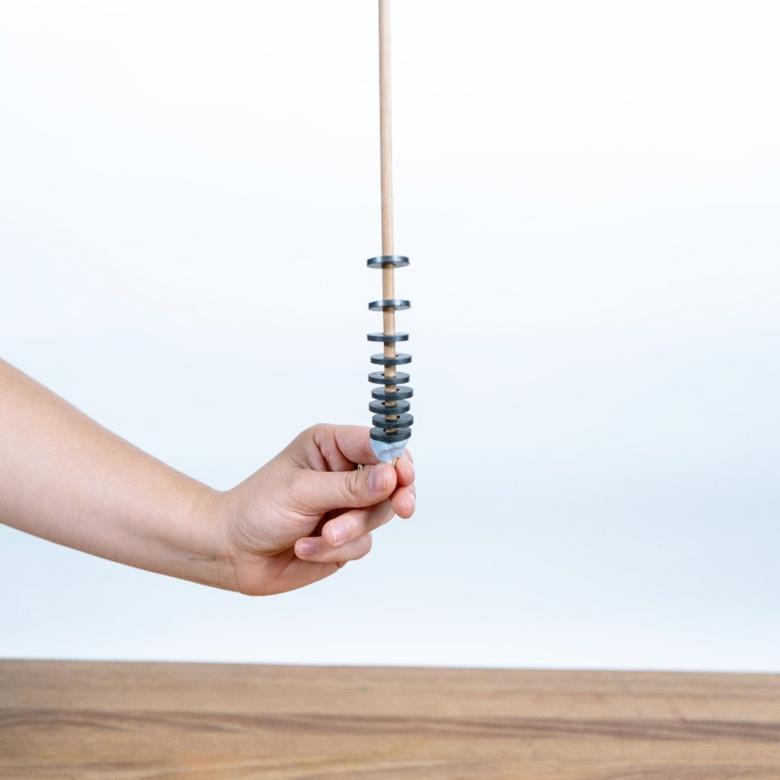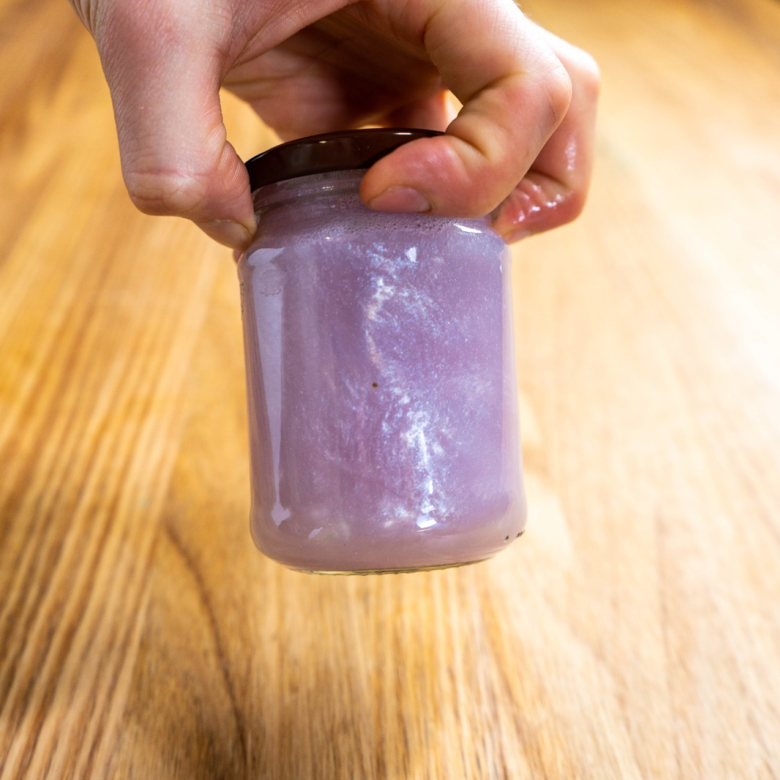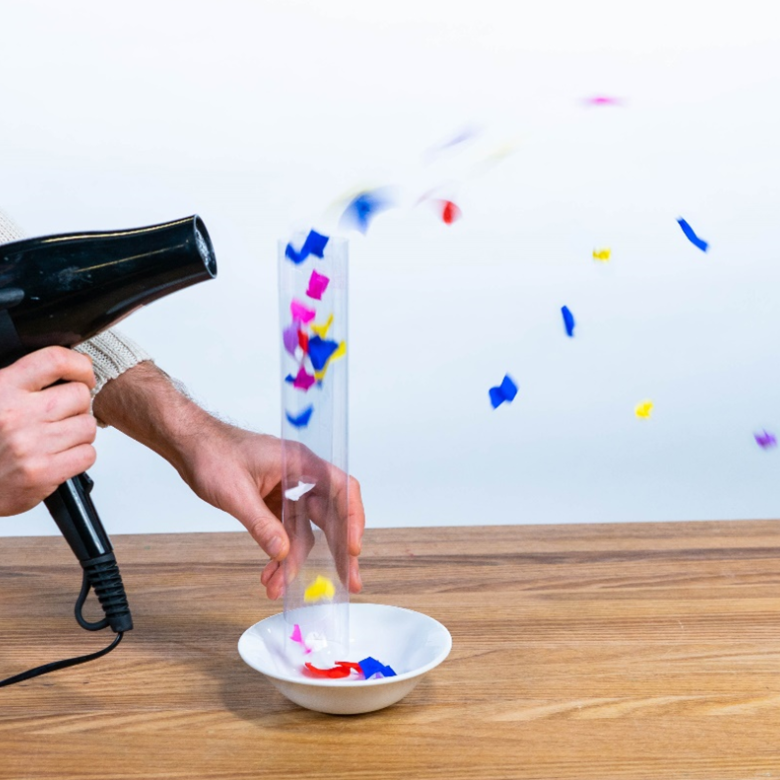About
- A 1.25 L soft drink bottle with the label removed
- A nail
- Masking tape
- Water (enough to fill the soft drink bottle)
- A bucket
- A bright torch
What to do
- Gather your materials on a flat surface, like a desk or kitchen table.
- Carefully use the nail to make a small hole in the side of the bottle, near the base (about 2 cm above the base). Place some masking tape over the hole.
- Fill the bottle with water and place it on a table, with the hole pointing over the edge. Do not put the lid back on.
- Place the bucket on the floor so that the water stream from the hole will go into the bucket.
- Remove the tape so that the water begins to flow from the bottle.
- Turn on the torch and hold it so that the light shines through the bottle from the side opposite the hole.
- While keeping the torch in place, hold your free hand in the stream of water and move it up and down. You should see a spot of light on your hand. If you don’t, try moving the torch slightly.
Questions to ask
Before starting this experiment, see how the light from the torch behaves. Does it bend or go in a straight line? Cast a shadow and think about what that tells you about how the light travels.
Try shining the torch in a mirror. What happens to the light?
If you have a laser pointer, try shining it into the water stream. Can you trace the laser through the water stream?
What's happening
When the stream of water leaves the hole in the side of the bottle, light entering the water from the torch also passes into the stream of water. The light follows the path of the water. The light is trapped inside the stream of water because the internal surface of the water stream (that is, where the water meets the air) acts like a mirror and reflects the light back into the water. This is called the ‘principle of total internal reflection’.
Did you know
Fibre-optic cables use this principle to transmit light over long distances. The cables are made of threads of glass. As with the stream of water, the internal surface of the glass threads acts like a mirror. Light that is shone in one end of the glass threads is able to go around curves and corners wherever the glass bends.
Computers transfer information from one place to another by shining lasers that transmit very short pulses of light (billions of pulses per second) through fibre-optic cables. This means fibre-optic cables are a crucial part of the internet. Some new fibre-optic systems can channel many different-coloured beams of light through a single cable, which allows information to be transferred more efficiently.


